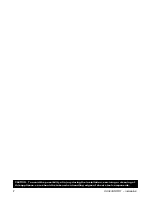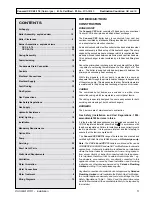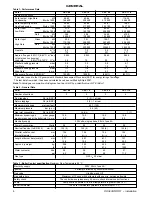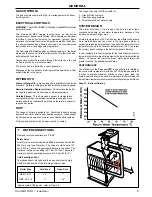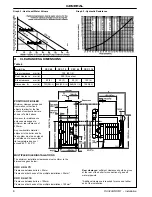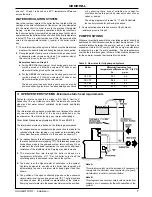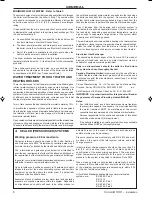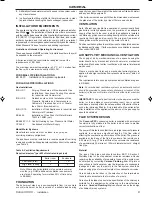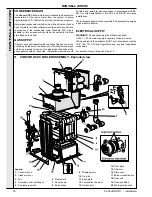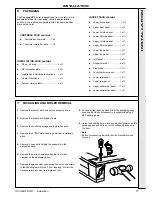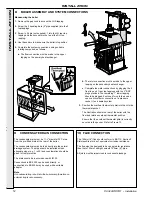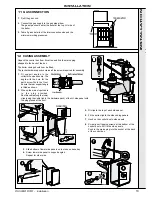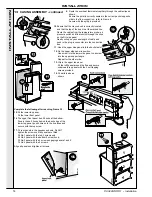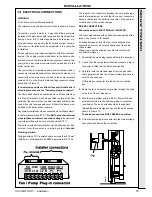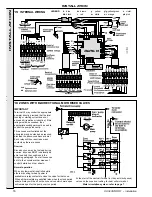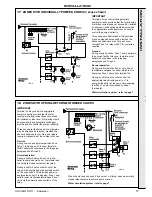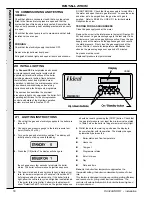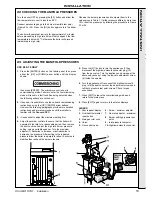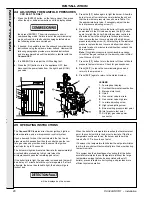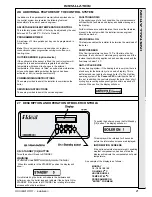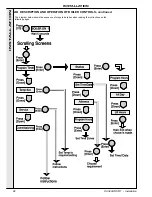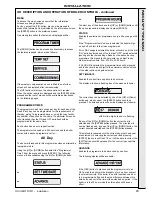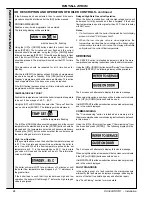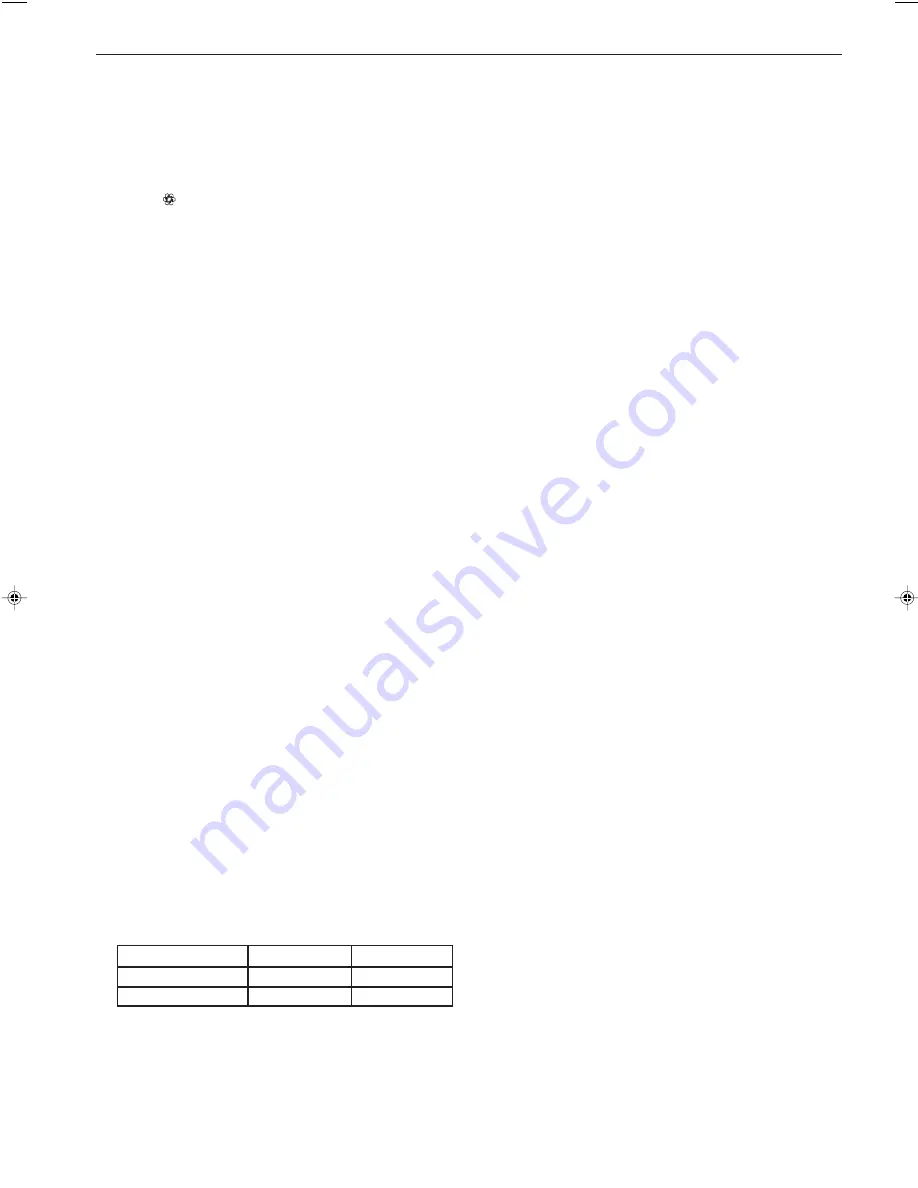
9
Concord CXC -
Installation
GENERAL
capacity to support the weight of the boiler (when filled with water)
and any ancillary equipment.
If the boiler is mounted on a plinth then the dimensions must exceed
the plan area of the boiler by at least 75mm on each side.
VENTILATION
Safe, efficient and trouble-free operation of conventionally flued
gas boilers is vitally dependent on the provision of an adequate
supply of fresh air to the room in which the appliance is installed.
Ventilation by grilles communicating directly with the outside air is
required at both high and low levels. The minimum free areas of
these grilles must be according to the scale in Table 6.
Position ventilation grilles to avoid the risk of accidental obstruction
by blockage or flooding. If further guidance on ventilation is required
then consult BS.6644.
AIR SUPPLY BY MECHANICAL VENTILATION
The supply of air by mechanical means to a space housing the
boiler should be by mechanical inlet with natural or mechanical
extraction. Mechanical extract ventilation with natural inlet
must
not
be used.
Where a mechanical inlet and a mechanical extract system is
applied, the design ventilation flow rates should be as in Table 4 of
BS.6644.
The requirements for air supply by mechanical ventilation are given
in BS.6644.
Note.
For mechanical ventilation systems an automatic control
should be provided to cause safety shutdown or lockout of the
boiler(s) in the event of failure of air flow in either inlet or extract
fans.
IMPORTANT.
The use of an extractor fan in the same room as the
boiler (or in an adjacent, communicating room) can, in certain
conditions, adversely affect the safe operation of the boiler. Where
such a fan is already fitted (or if it is intended to fit an extractor fan
after installation of the appliance) the advice of the gas supplier
should be obtained.
FLUE SYSTEM DESIGN
The
Concord CXC
condensing boiler is supplied with an integral
fan which is fully matched to the boiler in each case to provide
correct combustion air flow.
The power of this fan is such that there is a large reserve of pressure
available to overcome a significant length of the flue without
affecting the combustion performance of the boiler. The pressure
available at the base of the flue to overcome flue resistance is
0.25 mbar (0.1 w.g.) This is sufficient to overcome the resistance
of approximately 30 metres of 150mm diameter smooth, straight
flue pipe.
Material
The type of flue pipe used should conform BS.715: Section 2
Stainless Steel or be of equivalent corrosion resistance. Advice
regarding the availability of proprietary types of flue system can
be obtained by contacting
Caradon Plumbing Ltd.
All joints or
connections in the flue system must be impervious to condensate
leakage and also any low points in the flue system should be
drained using pipe of material resistant to condensate corrosion.
Care should also be taken in the selection of flue terminals as
these tend to accentuate the formation of a plume.
Care should be taken to ensure the specification of the chimney is
suitable for the application by reference to the manufacturers
literature.
Caradon Plumbing Ltd
can offer advice on the design
of suitable chimney systems.
INSTALLATION REQUIREMENTS
The appliance must be installed by a CORGI registered installer,
identified by . The installation of the boiler must be in accordance
with the relevant requirements of the Gas Safety Regulations, current
IEE (BS.7671) Regulations, Model Water Bye-laws, local water
authority bye-laws and it should also comply with any relevant
requirements of the local gas supplier, local authority and the relevant
British Standard Codes of practice and building regulations.
Limitations of Intended Operating Environment
These appliances are
NOT
suitable for installation where they will
be exposed to the elements.
A boiler room shall be constructed or adapted to meet the
requirements of BS. 6644.
The maximum ambient temperature is 32° C at 1.5 metres from
the floor, with a maximum humidity of 90% RH.
FOR SMALL PIPE INSTALLATIONS:
BS. 6891:
Installation of low pressure pipework
FOR LARGE PIPE INSTALLATIONS
Gas Installations
IGE-UP-1:
Purging Procedures of Non-domestic Gas
Installations. Soundness Testing Procedures
for Industrial and Commercial.
IGE-UP-2:
Guidance notes on the Installation of Gas
Pipework, Boosters and Compressors in
Customer’s Premises Equal to or Greater
than 25mm (Non-domestic).
IGE-UP-10:
Installation of Gas Appliances in Industrial and
Commercial Premises.
BS.6644:
Installation of Gas Fired Hot Water Boilers
70kW to 1.8MW (net).
BS 6880 Pt 1-3: Control Heating by Low Pressure Hot Water.
CP342:2:
Centralised Hot Water Supply.
Model Water Bye-laws
Manufacturers notes must not be taken, in any way, as
overriding statutory obligations.
The appliance must be installed in a room separated from living
rooms and provided with appropriate ventilation direct to the outside
- see Table 6.
2.
Artificially softened water must not be used in the system, under
any circumstances.
3.
In all systems the fitting of a filter to the return pipework, in order
to prevent debris reaching the heat exchanger, is essential.
FOUNDATION
The boiler must stand on a non-combustible floor (i.e. concrete
or brick) which must be flat, level and of a suitable load bearing
Table 6 - Ventilation Requirements
Required area (cm
2
) per kW of total rated input (net)
Boiler room
Enclosure
Low level (inlet)
4
10
High level (outlet)
2
5
Note: Where a boiler installation is to operate in summer
months (e.g. DHW) additional ventilation requirements
are stated, if operating for more than 50% of time (refer
to BS6644).
138423-7.pmd
11/7/2005, 9:48 AM
9
Summary of Contents for Concord CXC 116
Page 1: ......
Page 38: ...38 Concord CXC Installation NOTES ...


